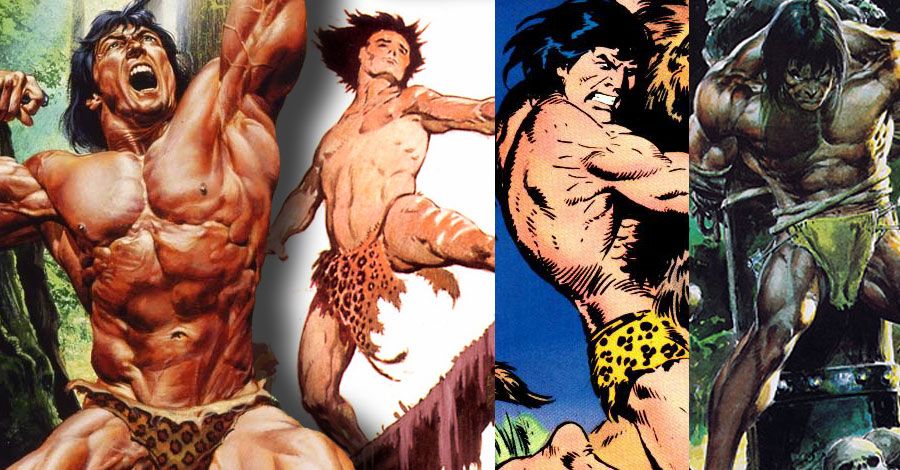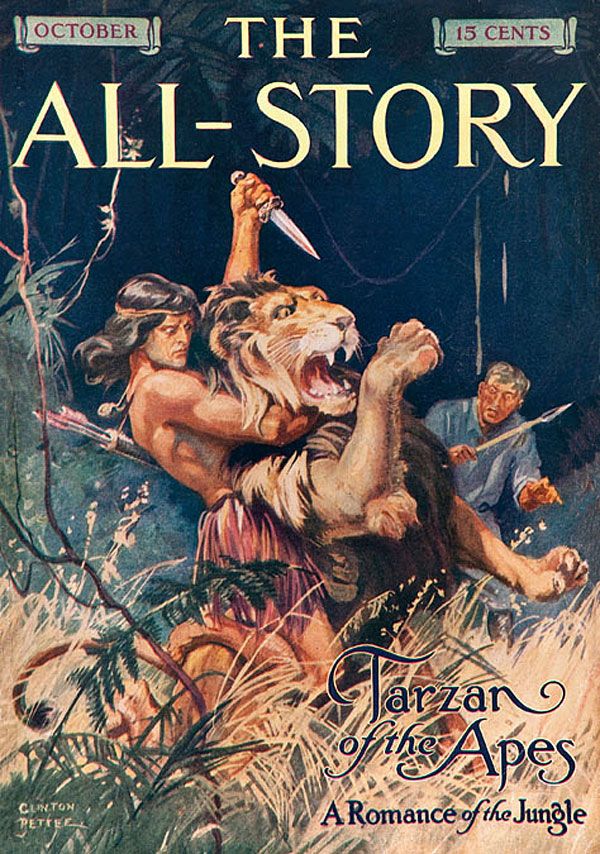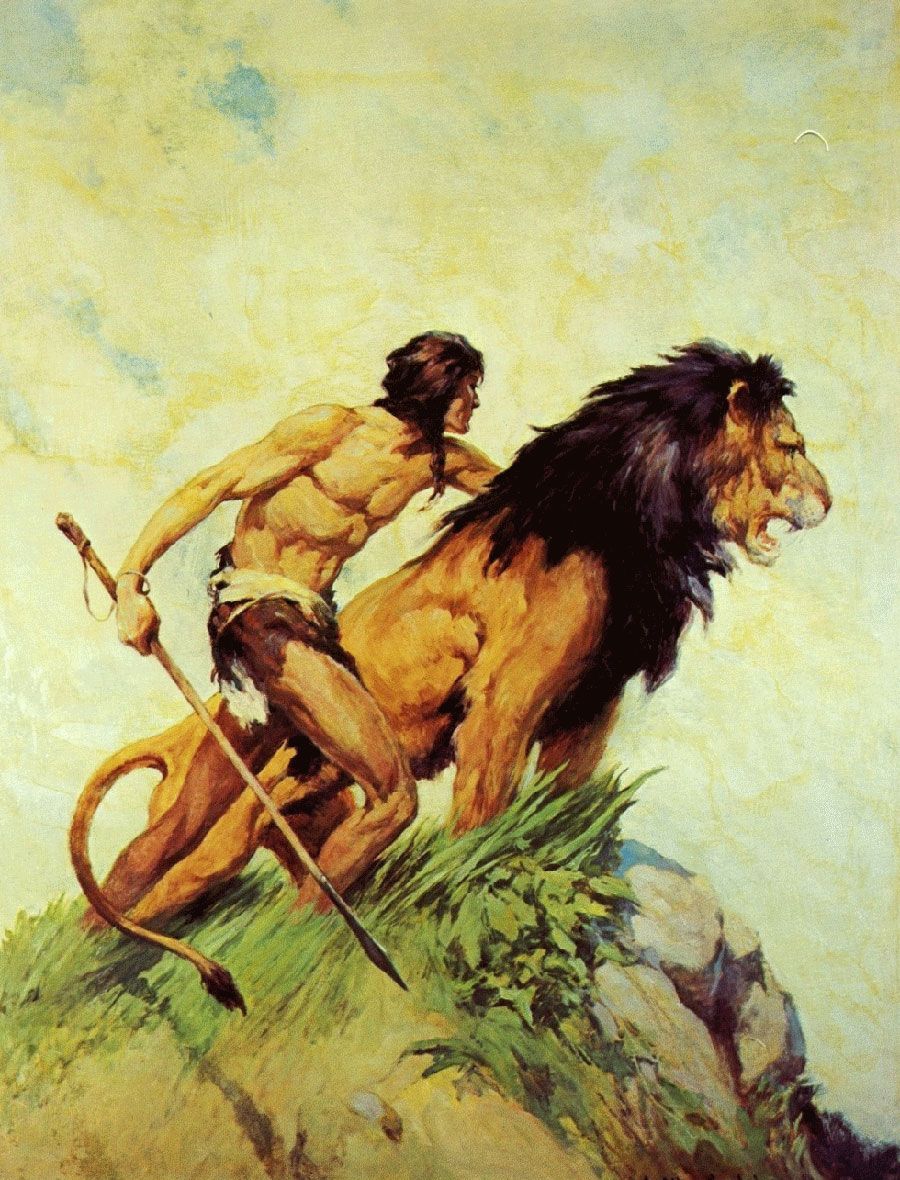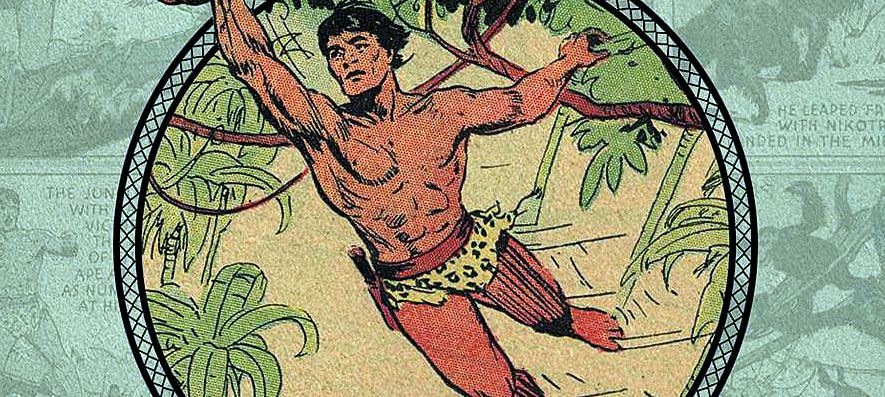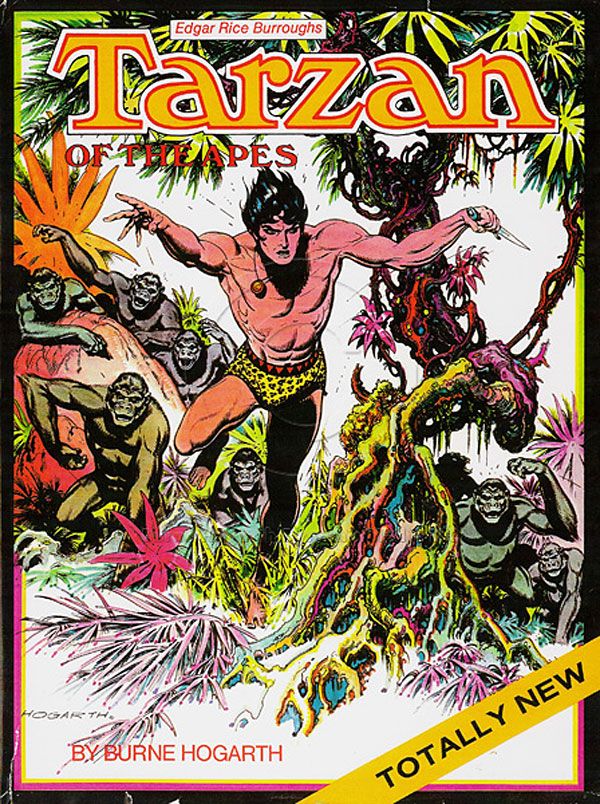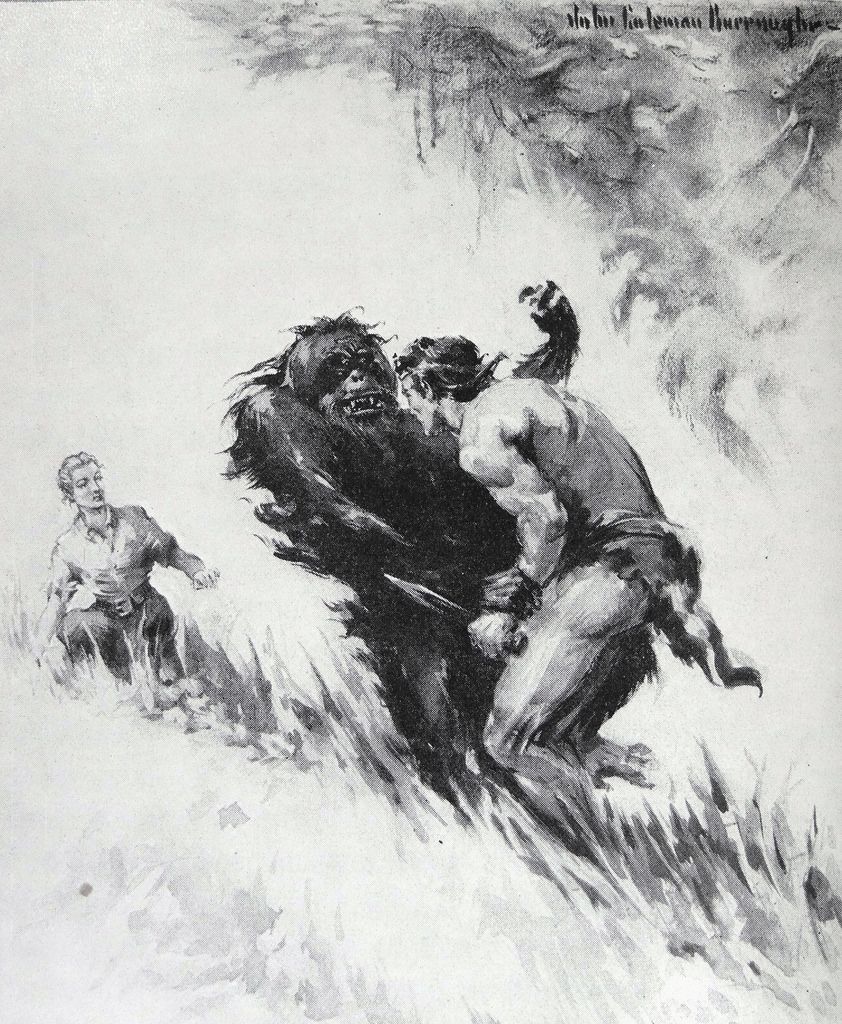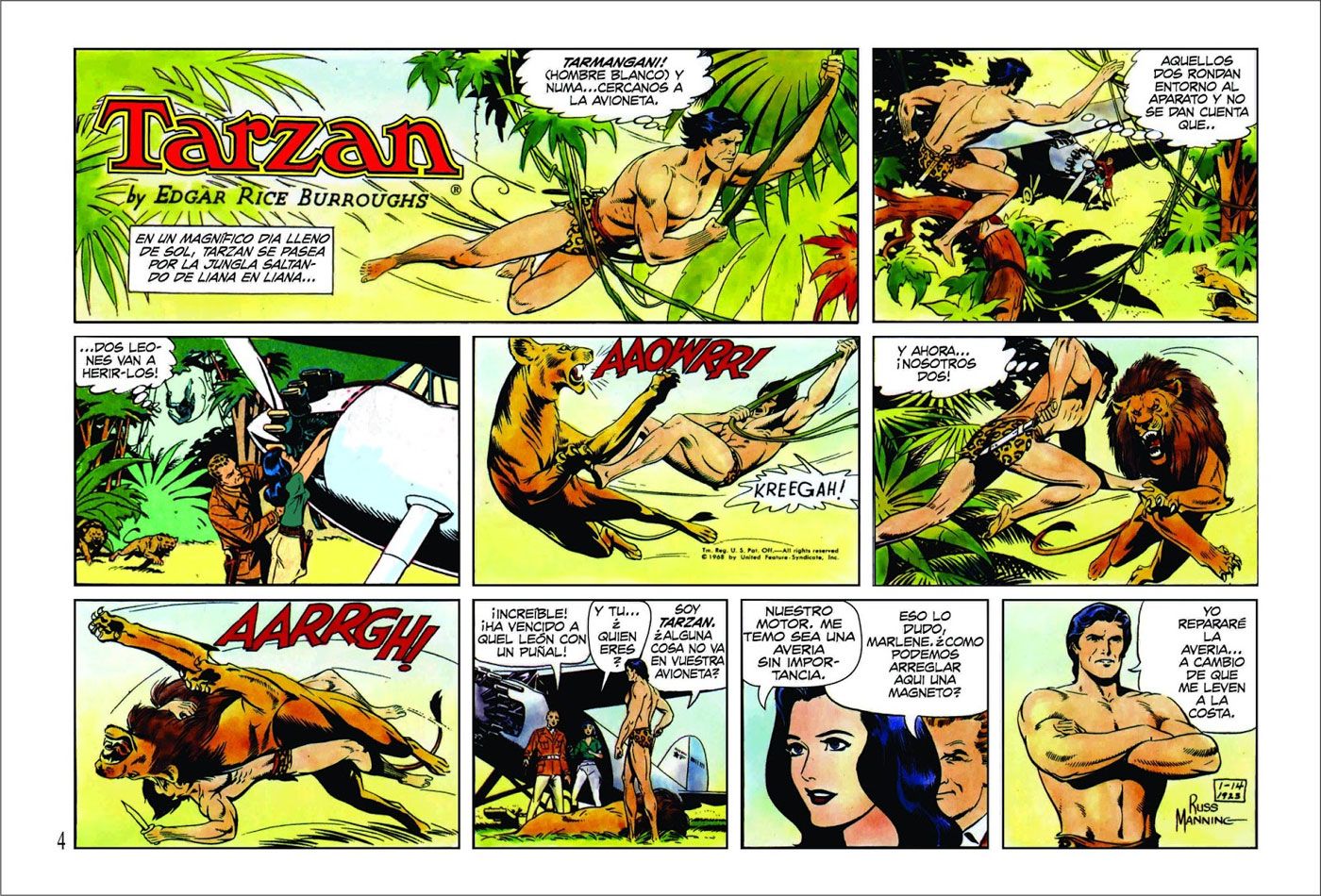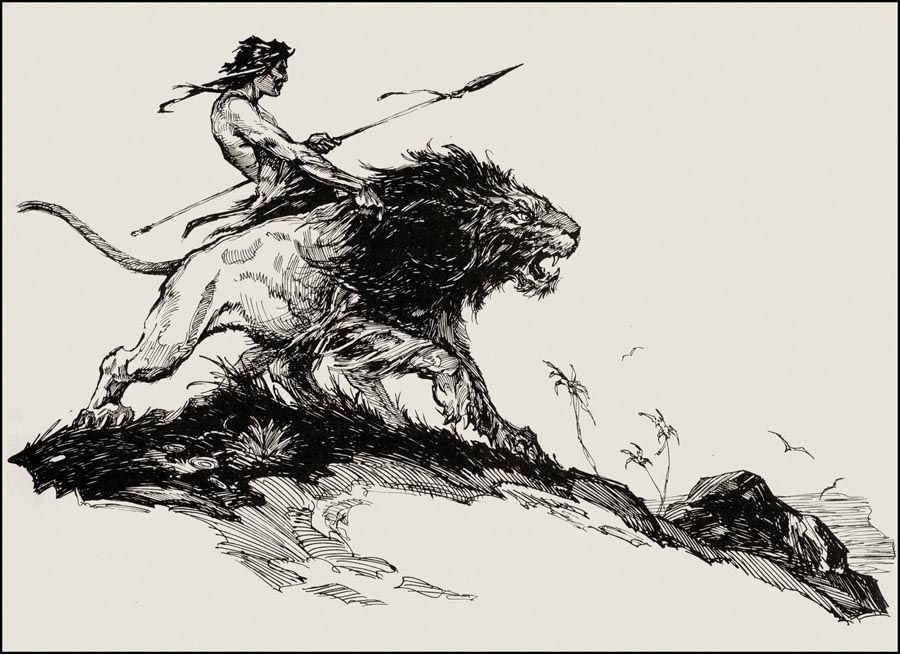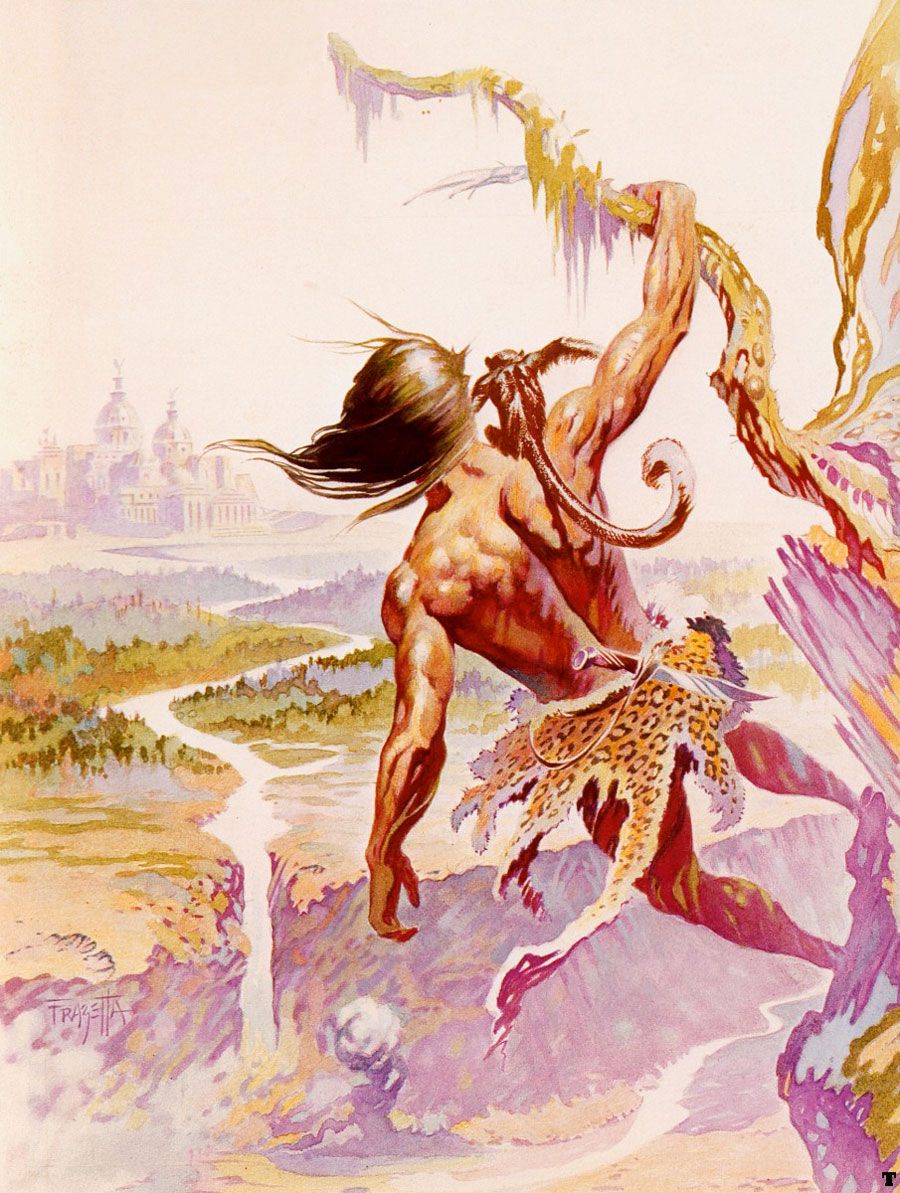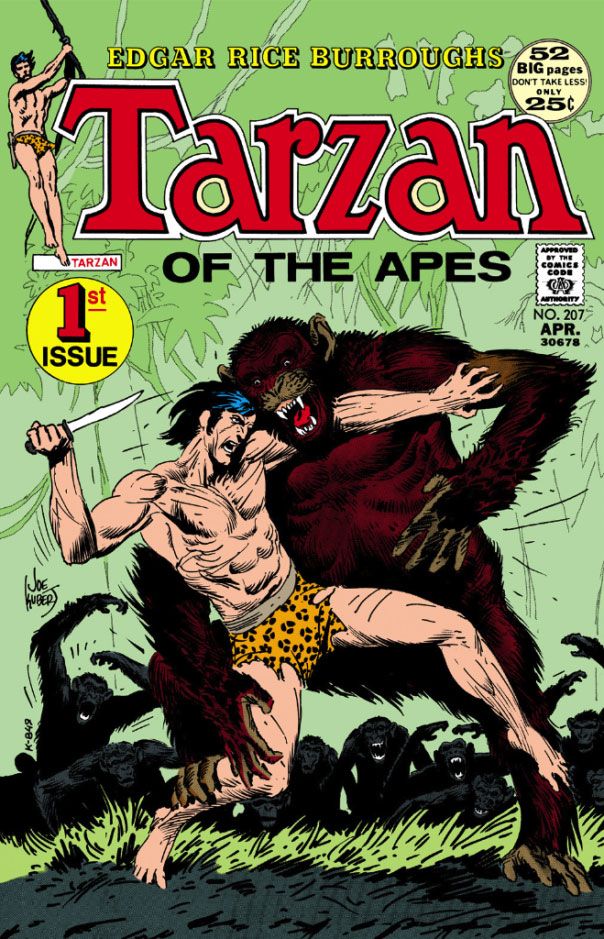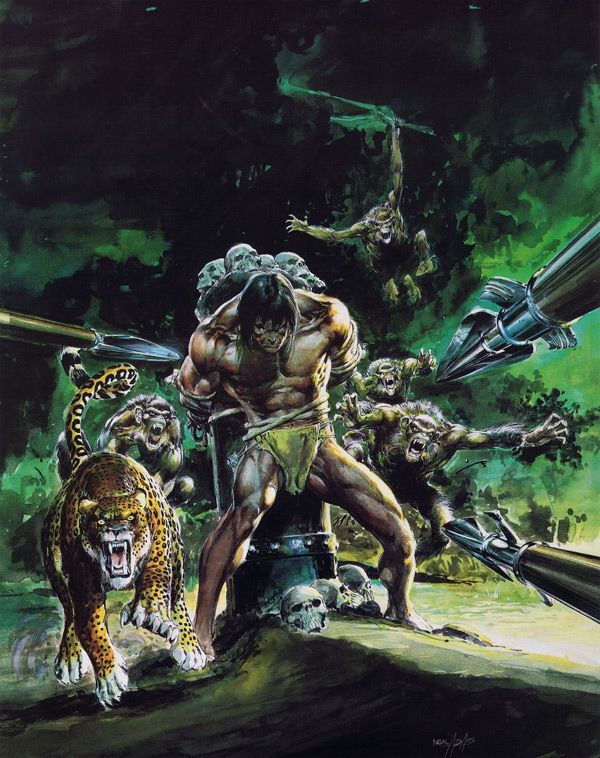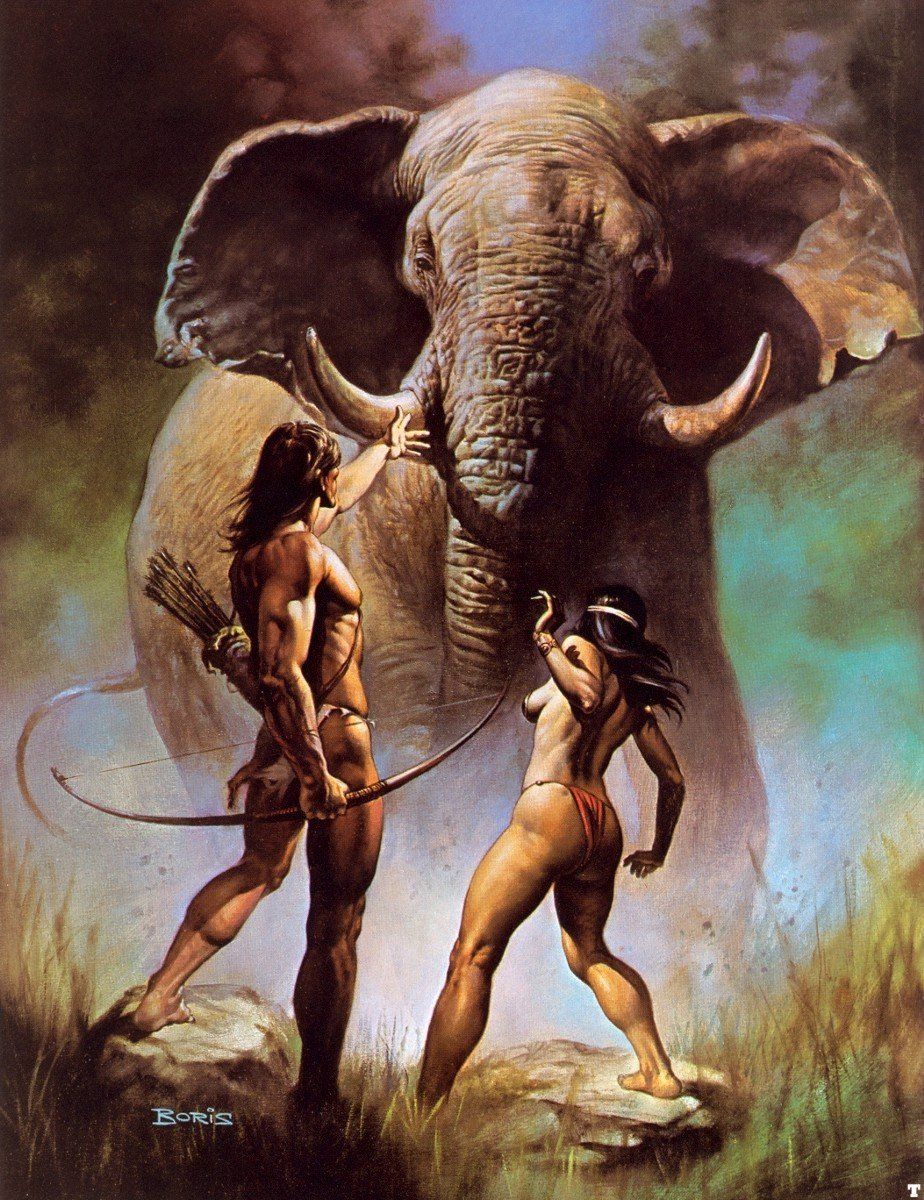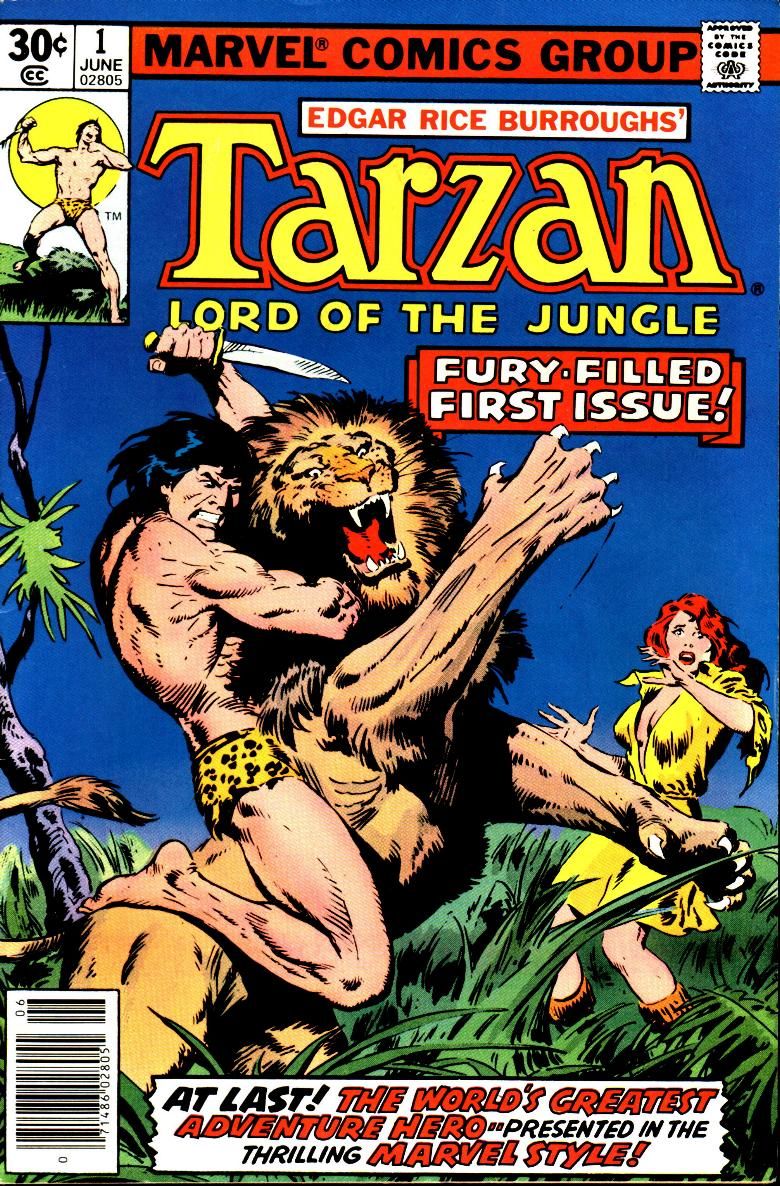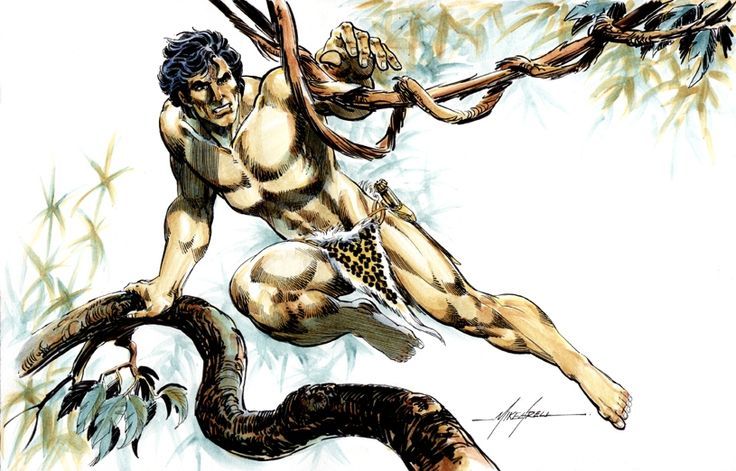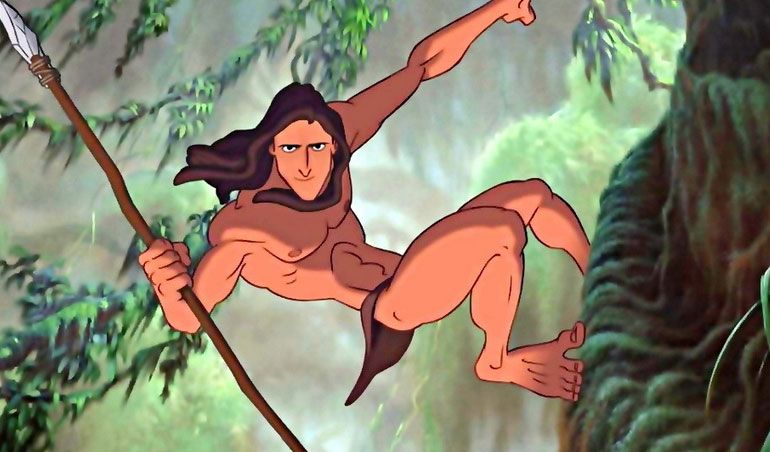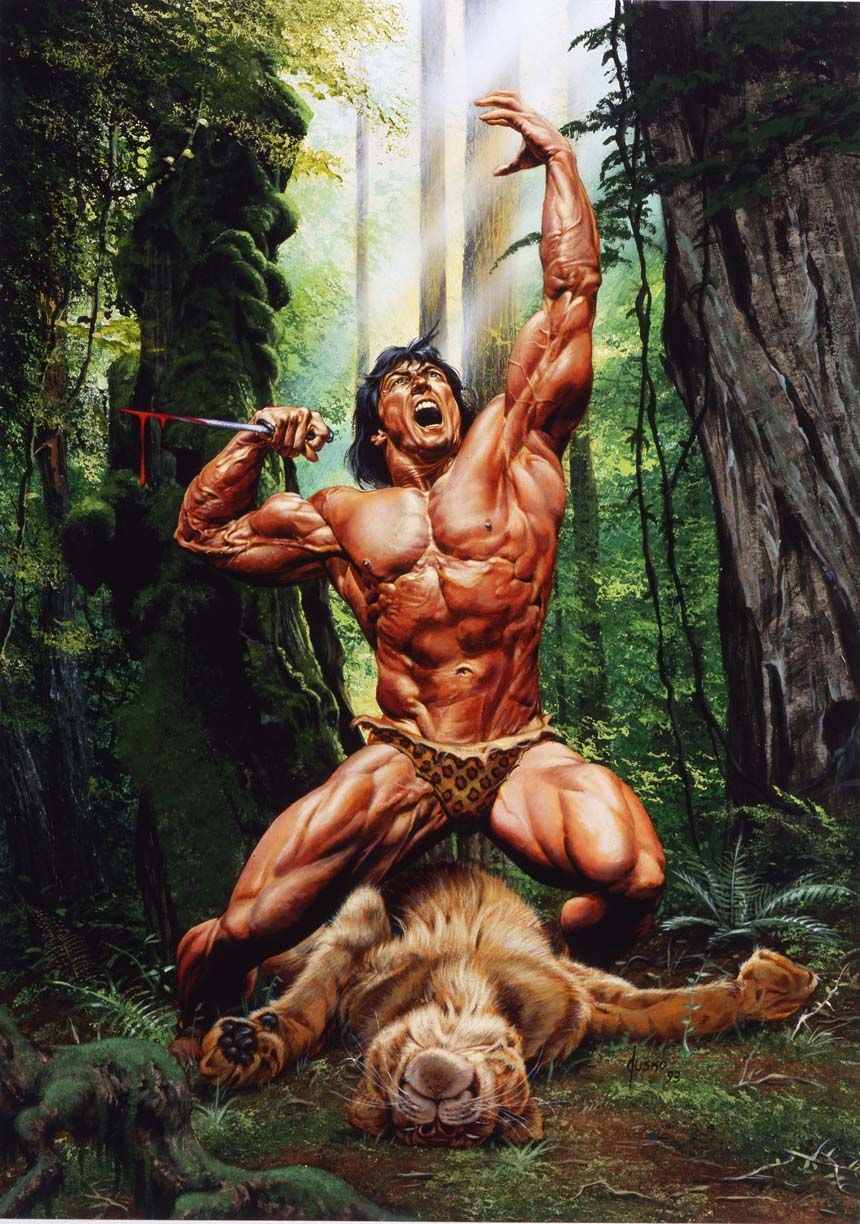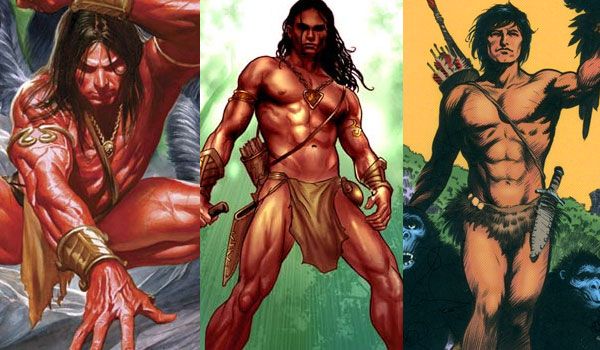For over 100 years, artists have gone ape over the ape-man.
Few pop cultural characters come with as rich an artistic lineage as Tarzan. The exotic appeal of author Edgar Rice Burroughs' vision of an Englishman raised by apes and in command of the beasts of the African jungle has inspired generations of some of the finest artists of both pulp and comics illustration.
The accumulated imagery ranges from lavishly rendered paperback covers and interior chapter drawings, to the fluid storytelling of newspaper strips and comic books. All of this results in a body of work that couldn't be ignored by filmmaker David Yates, the director of the Lord of the Jungle's latest film incarnation "The Legend of Tarzan."
"There was so much history, so many iconic images to look at," Yates told SPINOFF ONLINE, citing the legendary work of Frank Frazetta as a particularly "amazing" resource. "We obviously wanted sort of very graceful bow to all of that. So yeah, without question, it would be a shame not to celebrate the history."
REVIEW: "The Legend of Tarzan" Is So Awful It's Astonishing
We couldn't agree more, and so we looked to the iconic character's past. What follows is a look at some of the most significant graphic artists whose work has help define Tarzan over the decades.
16 Clinton Pettee
The illustrator who served as the first visual interpreter of Burroughs' creation, Pettee was a former actor and fountain pen designer who was a regular cover artist for many of the bestselling pulp adventure magazines of the era, including the October 1912 issue of "The All-Story," which featured the debut chapter of "Tarzan of the Apes." Crafting the first published image of the character, Pettee's dynamic interpretation gave Tarzan an instantly iconic appearance.
15 J. Allen St. John
With his background in fantasy book illustration, St. John's association with Tarzan began with black and white illustrations for the novel collecting the character's second adventure, This quickly blossomed into many painted covers and painstakingly etched interior images with both the ape man and other Burroughs' creations for several years, marking him one of Tarzan's most influential early interpreters.
14 Hal Foster
One of the trailblazers and standard-setters for the entire medium of adventure-driven sequential art, Foster's overall influence is immeasurable. He first made his mark in 1929 when he was tapped to introduce Tarzan into the world of newspaper strips. His work brought the sensibility of a fine artist and a sense of epic scope to the visuals (along with storytelling innovations like using evocative captions rather than word balloons) that would permanently imprint on the subsequent generation of Tarzan artists, including Frank Frazetta. Foster's success on the strip provided him with the opportunity to create his subsequent masterwork, the renowned, lavishly rendered newspaper strip "Prince Valiant."
13 Burne Hogarth
A prodigy and classically educated illustrator who found work during the Great Depression with King Features Syndicate, Hogarth became the principal artist on the "Tarzan" Sunday newspaper comic strip in 1937. Over a 12-year period, he would bring his unparalleled sense of classicism and dynamic mastery of anatomy in motion to pump new life into the hero's adventures. In the 1970s, after authoring books that would become definitive texts on artistic rendering that have never been out of print, Hogarth would return to the character for a series of acclaimed, handsomely-crafted and definitive Tarzan graphic novels.
12 John Coleman Burroughs
Burroughs' own son, known as Jack, was as gifted an illustrator as his father was a storyteller, and by the late 1930s he began a long tenure providing artwork for many of the senior Burroughs' signature works, including Tarzan. His black and white interior work in particular brought a moody, impressionistic and slightly surreal quality to the ape man that was reflected in later works of masters.
11 Russ Manning
After Tarzan was first adapted into the comic book medium at Western Comics -- first via their Dell imprint in late '40s and throughout '50s, followed by Gold Key into the 60s -- Manning became the ape-man's preeminent artist of his era. He brought a crisp, clean style -- and lovingly rendered animal life -- to his interiors, while crafting enticing, eye-catching cover art equal to any paperback novel. Later, Manning would illustrate the Tarzan newspaper strip, as well as graphic novels for the European market.
10 Roy Krenkel
Credited by Burroughs' heirs for reviving and sustaining interest in Tarzan five decades after the ape man's debut after he was tasked with illustrating Ace Books' reprinting of the classic tales in the early 1960s, Krenkel reimagined the Lord of the Jungle for a generation. The artist ranks high among the character's definitive interpreters, his work somehow feeling loose, fluid and sketchy yet simultaneously fully-formed and intently detailed.
9 Frank Frazetta
Now widely considered the ne plus ultra of fantasy artists, Frazetta honed his craft as a comic book and newspaper strip artist, most notably as an assistant to "Li'l Abner" creator Al Capp, before becoming a hotly in-demand illustrator of Hollywood movie posters and pulpy paperback covers. His paintings appearing as the covers on Robert E. Howard's Conan novels, were immediate (and enduring) sensations. Frazetta was entering the height of his visual prowess when he began his now-fabled association with Tarzan and other Burroughs creations in the mid-1960s, specifically with covers and interior illustrations for Ace Books' reprintings of the classic ape-man novels. Never reading the source material, Frazetta masterfully rendered Tarzan as he envisioned him: a rugged, muscular hero, powerful and dynamic, but with a moody air of exotic mystery.
8 Joe Kubert
A bona fide comic book legend whose influential work on characters like the winged superhero Hawkman, the war hero Sgt. Rock and the aviator Enemy Ace ranks among the greatest comics work of all time, Kubert -- a Burroughs aficionado -- was the editor/writer/artist DC Comics tapped to oversee Tarzan and the Burroughs creations when it acquired the comics license in 1972. The legendary artist proved a perfect fit for his visually arresting, action-packed style and effortlessly graphic -- and faithful -- storytelling style.
7 Neal Adams
By 1976, Neal Adams had near single-handedly revolutionized the comic book industry by bringing a previously unseen sense of realism and life to the page while still delivering some of the boldest and most dynamic layouts the industry had ever kmown. Tapped to provide 12 pristine gauche art covers for Ballantine Books' new editions of the Burroughs classics, Adams delivered the most savage -- and sexy -- incarnation of the ape-man to date, reinventing Tarzan yet again for another generation.
6 Boris Vallejo
At the same time Ballantine Book contracted Adams, the published assigned the remaining 12 Tarzan covers to the Peruvian-born oil painter whose imaginative sword-and-sorcery pulp-cover work featuring spectacularly muscled, erotically tinged barbarians and Amazonian women had taken the world of fantasy fandom by storm. Vallejo -- a bodybuilding enthusiast who often used himself as a model for the ape-man -- also proved to be one of Tarzan's most definitive interpreters.
5 John Buscema
When Marvel Comics landed the Tarzan comic book license in 1977, Buscema and writer Roy Thomas, both pillars of the early Marvel Age and the team driving the phenomenally successful comics adaptation of Conan the Barbarian, took to the character with gusto. Known as the "Michelangelo of comics," Buscema delivered his trademarks -- splendid anatomy, dynamic action and raw, palpable emotion -- in spades.
4 Mike Grell
DC Comics' breakout writer/artist of the late '70s and early '80s, Grell became a superstar with his Pellucidar and Burroughs-influenced creation "The Warlord," making him a natural choice to assume the creative control of the "Tarzan" Sunday newspaper strip in 1981. A hunting enthusiast with a keen eye for rendering flora and fauna, Grell's depiction of Tarzan's jungle and its animal inhabitants was one of the most lavishly drawn.
3 Glen Keane
The son of "Family Circus" newspaper strip artist Bill Keane, Glen Keane became a standout animator for the Walt Disney Company and, with his designs for characters like "The Little Mermaid's" Ariel and "Beauty and Beast's" Beast, one of the principal architects of the company's second Golden Age of Animation. As supervising animator on 1999's "Tarzan," Keane delivered the most fluid, feral and convincingly animalistic takes on the ape-man ever seen, along with the innovative notion to have him "surf" like a skateboarder through the jungle canopy. With an assist from Disney's powerful marketing and merchandising muscle, Keane's Tarzan had a profound impact on a new, young generation of fans.
2 Joe Jusko
After making a name for himself with his startlingly realistic superhero portraits for the Marvel Masterpieces trading card set (which helped set off the trading card boom of the early '90s), Jusko gravitated toward more savage fantasy characters, becoming a regular interpreter of all of Burrough's far-flung creations. His intensely photorealistic, rippling-muscled work on Tarzan in particular became a hallmark of his career.
1 Thomas Yates
A member of the first graduating class from the Joe Kubert School of Cartoon and Graphic Art, Yeates quickly established himself as an innovative but classically-minded comic book artist. Heqq later upheld the proud tradition of jungle adventure art, first with his early work on Malibu Comics' short-lived "Tarzan: The Beckoning" in 1992, followed by a prolific stint illustrating the Lord of the Jungle in various Dark Horse Comics titles throughout the rest of the decade, crafting images with retro-pulp appeal enhanced by contemporary storytelling techniques.
Just as many more influential artists have contributed, directly or tangentially, to the visual legacy of Tarzan -- including Jesse March, Gil Kane, Bernie Wrightson, Mike Kaluta, Jeffrey Catherine Jones, Gray Morrow, Mark Schultz and Frank Cho -- as the ape-man continues to endure as a pop cultural staple even more will add their distinctive visions into the mix.
With its "Lord of the Jungle" and other Tarzan-related titles, Dynamite Comics in particular has already tapped a stunning new wave of ape-man interpreters -- most notably Alex Ross, Paul Renaud, Ryan Sook and Lucio Parrillo -- whose images may one day rank among the most iconic.

